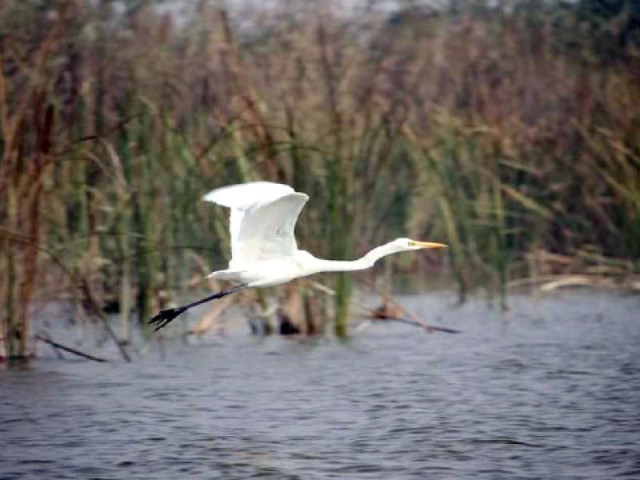Census finds drastic decline in migratory birds
SWD says post-flood inaccessibility, manpower issues hampered exercise

The number of migratory birds from Siberia that come to Pakistan witnessed a significant drop in numbers, as per a census conducted by Sindh Wildlife Department (SWD).
SWD Administrator Mumtaz Soomro, who led the exercise, said the drop in the reported numbers was due to last year's unusual monsoon and ensuing floods that made major parts of the province inaccessible. The temporary water bodies provided new options to birds instead of the usual lakes.
Around 300,000 migratory birds were reported across Sindh, including in Karachi, this season as compared to 661,537 birds in the preceding season, he said. These birds fly around 4,500 kms from the Siberian tundra to parts of Pakistan, arriving in November and leaving around March.
Since much of Sindh's rural districts were flooded or submerged, the birds landed on ponds of rainwater apart from the permanent water bodies and land, the administrator noted.
He said that in the past SWD teams would visit 30 lakes for the count. "But now hundreds of lakes have popped up across Sindh." Some of these water bodies were in inaccessible areas, he said.
The process of enumeration of migratory birds started on January 20 and continued till February 15. The final census report would be released after a few days, Soomro said.
Soomro told The Express Tribune that the birds that come in Sindh's coastal areas include pink goose, neel goose, spoon bill, pelican, and crane. They leave Siberia in the autumn in search of food and warm weather and enter Pakistan via the Central Asian state of Kazakhstan. They follow an instinctively set flyway during this regular seasonal movement considered one of the great wonders of the natural world.
Various species of ducks and waders, such as mallards and flamingos, swans and cranes, as well as the houbara bustard are among these migratory birds. They live around 100 lakes, water bodies, and salty and fresh water reservoirs in Karachi, Badin, and Nagarparkar.
In Karachi, their landing places include the beaches of Hawk's Bay, Sandspit, Paradise Point, and Russian Beach. In rural Sindh, they land on Keenjhar and Haleji lakes, and Sufi Anwar Park, etc.
'Super team'
Soomro said the department had formed a "super team" in Karachi for the bird census, while smaller teams were formed in other rural districts of Sindh. He cited the unusual monsoon rains as the main reason for the drastic decrease in the number of migratory birds. The SWD administrator said unusual monsoon rains had formed water reservoirs in the mountainous areas with difficult terrains making them inaccessible. We also don't have sufficient manpower, he continued.
"Apart from the traditional enumeration methods, we used modern techniques during the exercise," he said. A wooden square frame is pegged near any water body where other devices, including spotting scopes, are installed. "The number of birds in the wooden frame is counted. The process is repeated after every few metres for the compilation of the census report," he explained.
Published in The Express Tribune, March 4th, 2023.



















COMMENTS
Comments are moderated and generally will be posted if they are on-topic and not abusive.
For more information, please see our Comments FAQ